This post will explain how you can speed up the installation of Cumulative Updates in a SharePoint farm step by step using PowerShell. Using PowerShell, you can greatly reduce the time it takes to update your SharePoint farm which can take several hours to complete if you use the traditional method of installing Cumulative Updates. The steps described in this post are valid for SharePoint 2013, SharePoint 2016 and SharePoint 2019.
This post assumes a single SharePoint server but if you have multiple SharePoint servers, you must follow these steps on all SharePoint servers in your farm.
Introduction
The SharePoint world is rapidly moving into the Cloud with SharePoint Online and Office 365, but some organizations are still not ready to move completely to Office 365 and SharePoint Online.
Upgrading to SharePoint 2019 that has support for a hybrid scenario can be a valid solution to allow a gradual move to the cloud.
Installing a SharePoint 2019 farm can be done in an automated way using PowerShell and AutoSPInstaller. One additional advantage of this installation process ensures that the SharePoint farm is installed with the latest updates, leaving the SharePoint farm updated and working properly (if you want to learn how to install a SharePoint 2019 farm in an automated way, click here and here).
To ensure that after the installation, the SharePoint server is kept always updated, we must ensure that both the Windows Updates and specially the SharePoint Cumulative Updates are properly installed.
Installing SharePoint Updates
To install the latest SharePoint Cumulative Updates in your farm, follow the following steps:
- Download the SharePoint Cumulative Updates
- Backup SharePoint Farm and Configurations
- Install the Cumulative Updates in the SharePoint Farm (using PowerShell)
- Run SharePoint Products and Configuration Wizard
- Post-Installation Steps
Download the SharePoint Cumulative Updates
All starts by downloading the latest SharePoint Cumulative Updates. To do that, you must download:
- SharePoint 2016 and SharePoint 2019:
- The latest language independent SharePoint updates
- The latest language dependent SharePoint updates (even if you just have the English language pack installed in your farm)
- SharePoint 2013:
- The latest SharePoint 2013 Server updates (if you have SharePoint 2013 Server installed)
- The latest SharePoint Foundation 2013 updates (if you have only SharePoint Foundation 2013 installed). This update is not necessary if you have SharePoint 2013 Server since SharePoint Foundation 2013 is included in SharePoint 2013 Server
To stay up to date and download the latest updates, click here for SharePoint 2019, here for SharePoint 2016 and here for SharePoint 2013.
Backup SharePoint Farm and Configurations
Before applying the updates, you should perform the following backups:
- Backup the SharePoint farm by running the following command:
Backup-SPFarm -Directory <BackupFolder> -BackupMethod Full -Verbose
The backup folder should be a shared folder on the network, accessible by both SharePoint and database servers.
Ensure the SharePoint Server VSS Writer service is started on the SharePoint server (not started automatically).
Ensure the SQL Server VSS Writer service is started on the database server.
For more details about SharePoint farm backup, click here, here and here
- Backup all SharePoint databases in the database server that supports the SharePoint farm using SQL Server Enterprise tools
- Backup the web.config files for all web applications
- If you have custom developed solutions using server-side code, backup the solutions. To make this easier, you can download a PowerShell script from my GitHub repository
Install the Cumulative Updates in the SharePoint Farm (using PowerShell)
After downloading the latest updates and taking the necessary precautions, you are ready to install them in your SharePoint farm.
If you want to use the traditional method to update your farm, click here. If you want to learn the PowerShell way and speed up the installation of the Cumulative Updates in your SharePoint farm, read on!
To download the SharePoint Patch PowerShell script, click here. This script, written by Trevor Seward, is an improved version of a PowerShell script originally created by Russ Maxwell for SharePoint 2013.
The way this PowerShell script ensures that the SharePoint patch process time is reduced from 4 to 5 hours to less than one hour is by doing the following:
- If you choose to (use the -Pause switch parameter), suspends the Search Service Application. This is very important since if a search crawl was triggered during the installation of the Cumulative Update, the Search Application could get corrupted and you could be forced to rebuild the entire Search Service Application, recreate any custom managed properties and perform a Full Crawl again to ensure you have search results and all search based solutions work properly
- For SharePoint 2013 (not necessary for SharePoint 2016 and SharePoint 2019), the following services will be disabled and then stopped:
- Search services are disabled
- Search services are stopped
- IISAdmin and SPTimerV4 services are disabled
- IISAdmin and SPTimerV4 services are stopped
- If you choose to, the Cumulative Updates are installed in passive mode (without any necessary user interaction) but you can still see the installation process in the UI
- When the installation of the Cumulative Updates is complete:
- For SharePoint 2013 (not necessary for SharePoint 2016 and SharePoint 2019), the following services will be set to automatic:
- Search services
- IISAdmin and SPTimerV4 services
- If you choose to use the -Pause switch parameter, the Search Service Application will be resumed
- For SharePoint 2013 (not necessary for SharePoint 2016 and SharePoint 2019), the following services will be set to automatic:
To start the installation process, open the SharePoint PowerShell window (run as administrator) and execute the following commands:
- Import-Module .\SharePointPatchScript.psm1
- Install-SPPatch -Path -Pause
- Example: Install-SPPatch -Path D:\SharePoint\Updates -Pause
For SharePoint 2016 and 2019, a monthly Cumulative Update typically contains both the language independent (“sts” file) and the language dependent (“wssloc” file) packages. Sometimes, a Cumulative Update only includes the language independent package. If that is the case, and you already have the latest language dependent package installed, you can run the PowerShell command with the -OnlySTS switch parameter:
- Import-Module .\SharePointPatchScript.psm1
- Install-SPPatch -OnlySTS -Path -Pause
- Example: Install-SPPatch -OnlySTS -Path D:\SharePoint\Updates -Pause
This will start the SharePoint farm update process (examples for SharePoint 2013 and SharePoint 2019).
For SharePoint 2013, SharePoint Server or SharePoint Foundation packages will be detected automatically and installed. The example below is for SharePoint 2013 Server.
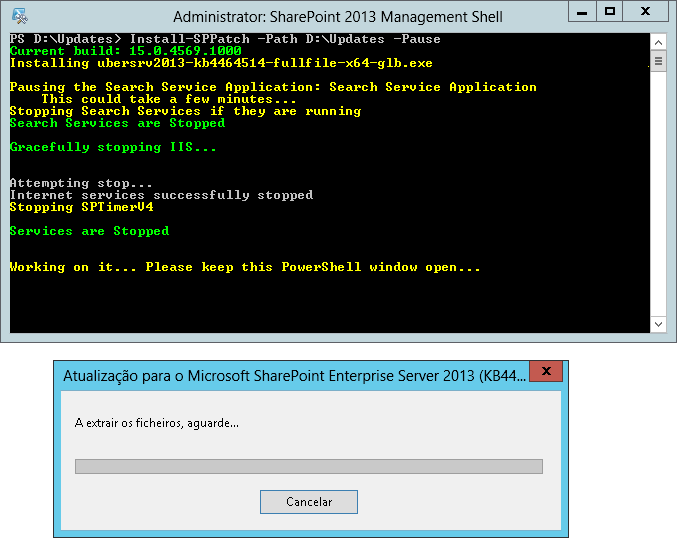
For SharePoint 2016 and SharePoint 2019, both language independent and language dependent packages will be detected automatically and installed.
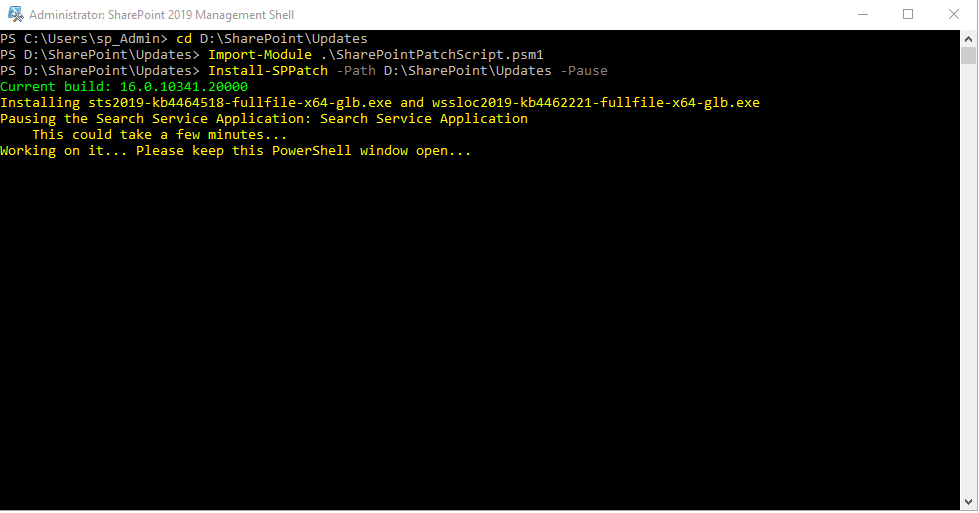

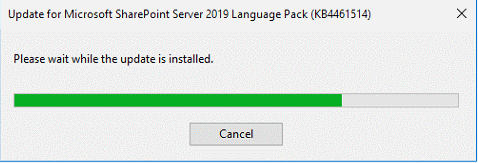

Instead of taking hours to perform, the updates should be installed in less than one hour.
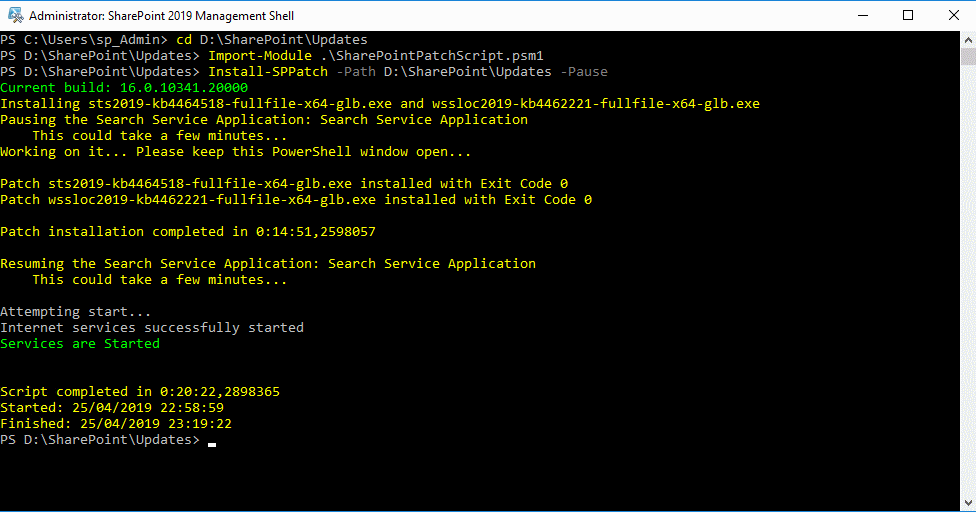

A reboot to the server may be necessary.
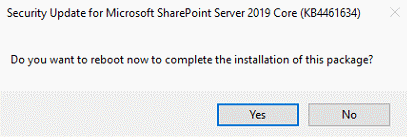

Run SharePoint Products and Configuration Wizard
To finish the farm update process, you must ensure that after the updates are properly installed, you execute the SharePoint Products and Configuration Wizard that will ensure the following:
- The database schema for all SharePoint databases is updated to the latest version
- Copies the required binaries from the install location into the _app_bin directories of all web applications
- Fixes security settings on the file system to match SharePoint’s needs
- Updates features registrations with SharePoint
To start, run the SharePoint Products and Configuration Wizard and select Yes when prompted to reset IIS, SharePoint Administration and SharePoint Timer services.
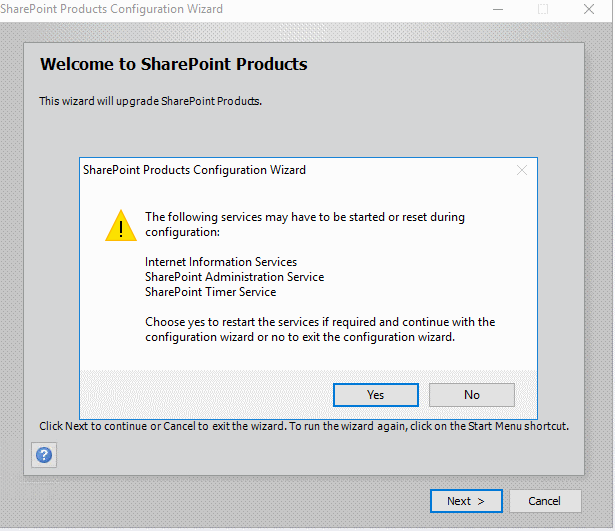

Depending on your environment, the process will take some minutes to execute the 10 steps of the process.
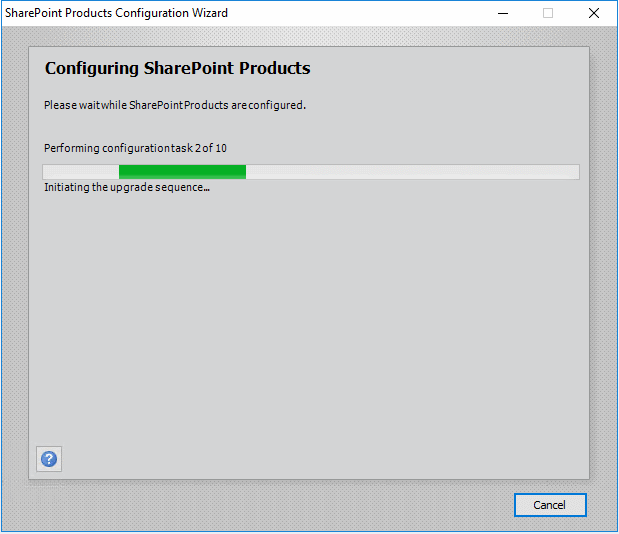

After a few minutes, the SharePoint Products Configuration Wizard will finish executing, hopefully with success.
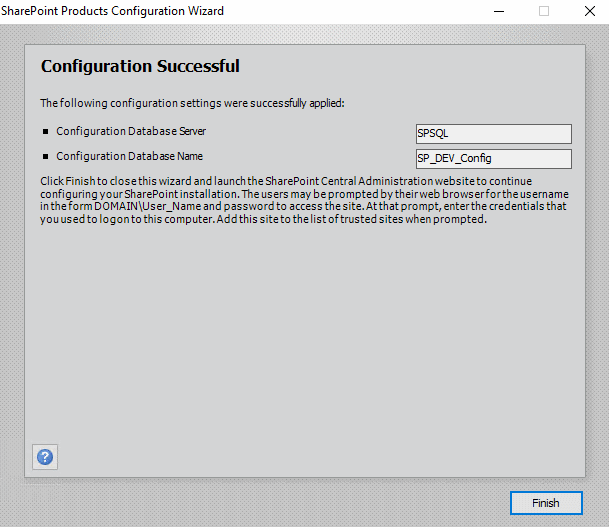

After clicking on Finish, the Central Administration will automatically be launched.


Post-Installation Steps
To ensure that the farm was successfully updated, it is important to check that the Databases Upgrade Status page.


If the page shows any database still needing upgrade (showing the “Database is in compatibility range and upgrade is recommended” status), some additional steps must be followed.
These steps must also be followed if you encounter the error below while running SharePoint Products and Configuration Wizard, saying that there is a mismatch between SharePoint installed version (after updating the farm) and the database schema version.
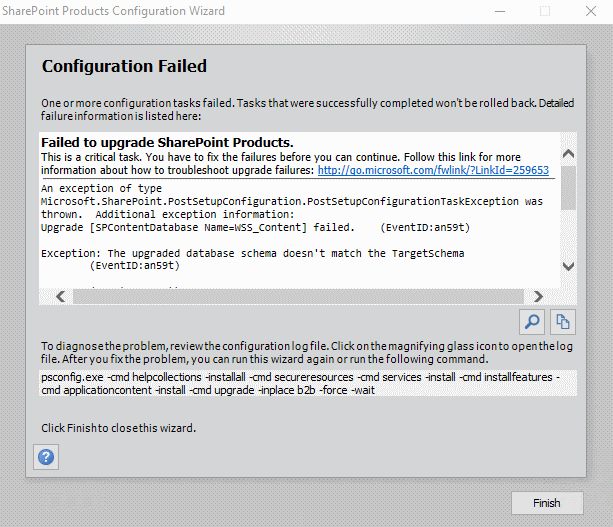

To ensure all databases are properly upgraded, follow the following steps:
- Upgrade the content databases by executing the following PowerShell command (executed with “run as administrator”):
Get-SPContentDatabase | Upgrade-SPContentDatabase
- Upgrade the remaining content databases, executing the following command (in command prompt with “run as administrator”):
Psconfig.exe -cmd upgrade -inplace b2b -wait -force
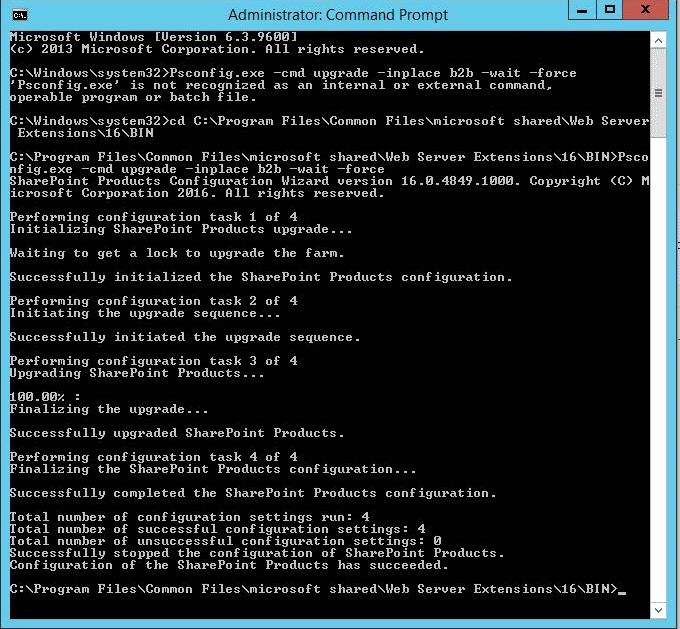

- Run the SharePoint Products and Configuration Wizard (PSCONFIGUI.EXE) again. After running SharePoint Products and Configuration Wizard again, it should run without errors.
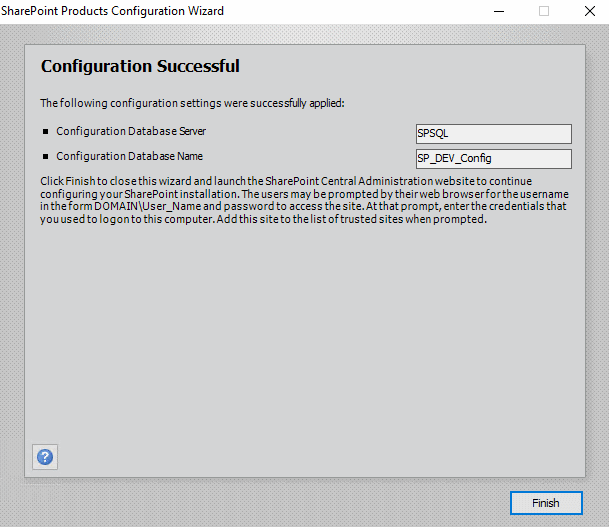

To confirm the databases upgrade was successful, go back to the Databases Upgrade Status page. After the previous steps, all SharePoint databases were successfully upgraded.
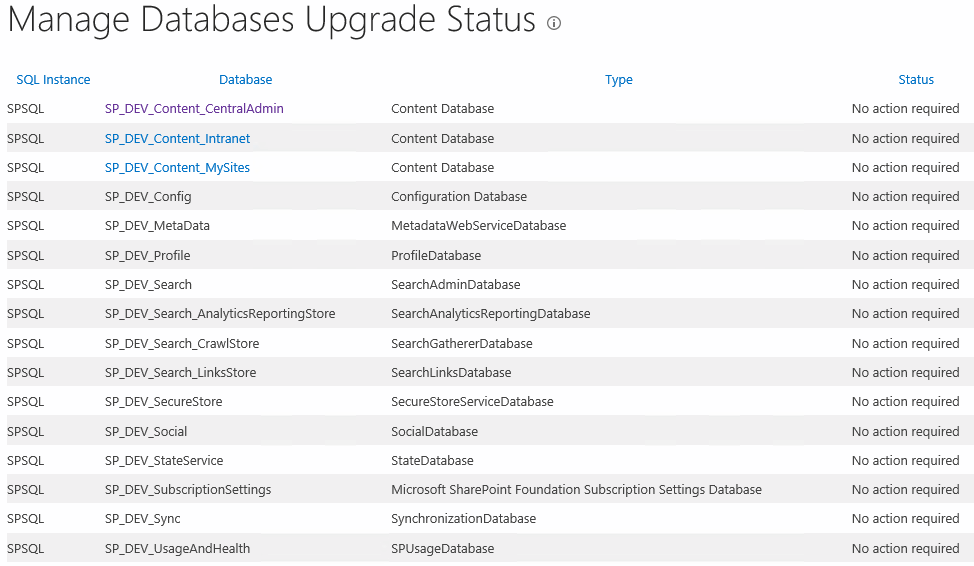

To ensure the upgrade process was successfully finished, go to the Patch Status page and the Upgrade Status page.
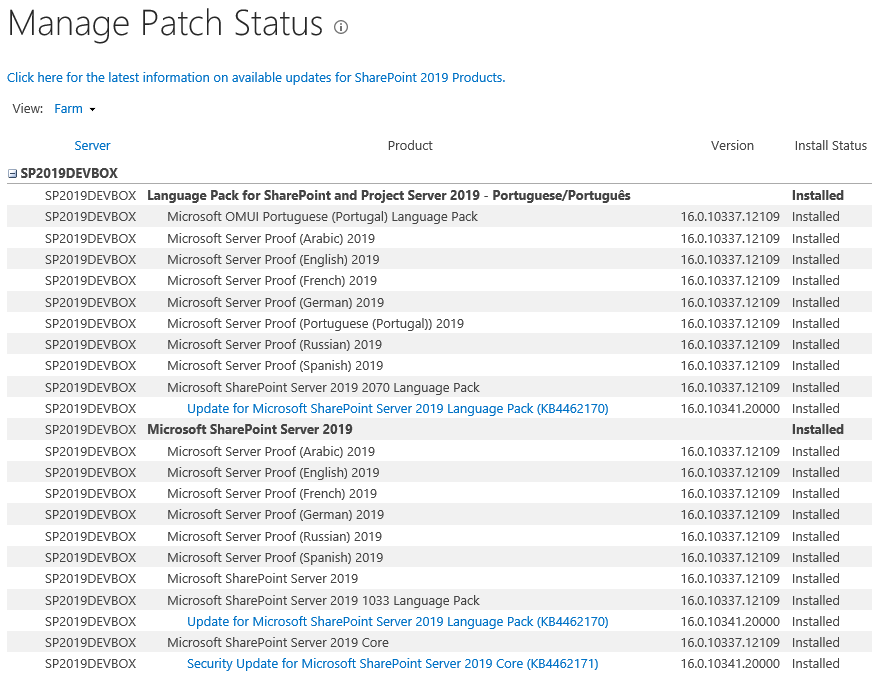



Important Notes
Some important notes on using SharePoint Products and Configuration Wizard (PSCONFIGUI.EXE) and PSCONFIG.EXE (command line version):
- You should not run PSCONFIG.EXE as a replacement of SharePoint Products and Configuration Wizard (PSCONFIGUI.EXE)
- PSCONFIGUI.EXE is the UI based configuration wizard which performs several tasks one after the other after installing fixes. It is the preferred option to ensure that the SharePoint farm update is completed after installing updates in your SharePoint farm
- PSCONFIG.EXE is the command line tool which gives users granular control over all tasks that are executed and which is therefore often quicker than PSCONFIGUI.EXE but if misused will not make all the necessary tasks required after installing updates in your SharePoint farm
- If you want to run PSCONFIG.EXE, ensure you run it with the correct parameters: “PSConfig.exe -cmd upgrade -inplace b2b -wait -cmd applicationcontent -install -cmd installfeatures -cmd secureresources -cmd services -install”
- Above, I used “Psconfig.exe -cmd upgrade -inplace b2b -wait -force” since I already had used
SharePoint Products and Configuration Wizard (PSCONFIGUI.EXE) and the only thing I wanted to ensure was that SharePoint databases schema were upgraded
- Above, I used “Psconfig.exe -cmd upgrade -inplace b2b -wait -force” since I already had used
- PSCONFIGUI.EXE should always be executed even when installing SharePoint security updates
For more details, check Stefan Goßner’s articles here and here.
Troubleshooting
During an update there are a few errors that can occur while the patch is being validated against your SharePoint environment before is starts being installed. The most common errors are the following:
- “The expected version of the product was not found on the system” – this article by Stefan Goßner explains the error in detail and what can cause it. Basically, SharePoint is typically composed of the following components:
- SharePoint Server or SharePoint Foundation*
- SharePoint Server or SharePoint Foundation English Language Pack*
- Any additional SharePoint Server or SharePoint Foundation Language Packs*
* – SharePoint Foundation existed from SharePoint 2007 to SharePoint 2013 and in SharePoint 2016 and 2019, only SharePoint Server is available
To solve this error, you must ensure that all components have the same patch level. If any of the installed components has a lower patch level or doesn’t meet the Cumulative Update Prerequisites, the error above will be shown and you won’t be able to install the Cumulative Update in your SharePoint farm.
Example: Install the May 2019 Cumulative Update in a SharePoint 2013 farm that has Service Pack 1 (15.0.4571.1502 patch level). The installed components have the following patch levels:- SharePoint Server 2013 – 15.0.4571.1502 (Service Pack 1)
- SharePoint Server 2013 English Language Pack – 15.0.4571.1502 (Service Pack 1)
- SharePoint Server 2013 Portuguese Language Pack – 15.0.4420.1017 (RTM)
The “The expected version of the product was not found on the system” error will be shown since of one of the components (the Portuguese Language Pack) has a lower patch level. To solve this, you must install the SharePoint Server 2013 Portuguese Language Pack Service Pack 1 (you can get the download link here)
To help you to identify the problem, you can use Roiscan which generates a detailed report of all installed Office components, including SharePoint, and verify the patch level of each components.
You can also take a look at this article that can help you ensure that the information about all installed patches is correctly updated in the SharePoint configuration database.
- “No product installed for contained patch” – this can occur if you are installing a Cumulative Update for the wrong version of SharePoint. The most common case is when you are trying to install the SharePoint Foundation 2013 Cumulative Update in a SharePoint Server 2013 farm. In this case, you only need to install the SharePoint 2013 Server Cumulative Update
Other errors can occur while trying to run SharePoint Products and Configuration Wizard after installing the patch:
- “Feature is referenced in database but isn’t installed on the current farm” – this is more common in an farm upgrade scenario (ex: upgrade from SharePoint 2013 to SharePoint 2019) but can also occur while installing a SharePoint Service Pack or Cumulative Update. To learn more details about this error and how to solve it, click here.
- “An update conflict has occurred, and you must re-try this action.” when you run the following command “Psconfig.exe -cmd upgrade -inplace b2b -wait -force”. If you take a look at the ULS Logs, you may find messages like “PSCONFIG.EXE (0x1A8C) UpdatedConcurrencyException: The object SPUpgradeSession Name=Upgrade-20190531-122515-42 was updated by another user. Determine if these changes will conflict, resolve any differences, and reapply the second change. This error may also indicate a programming error caused by obtaining two copies of the same object in a single thread.”. To solve this problem, execute the following command:
PSConfig.exe -cmd upgrade -inplace b2b -wait -cmd applicationcontent -install -cmd installfeatures -cmd secureresources
NOTE: After solving these issues, to finish the process, run SharePoint Products and Configuration Wizard again.
Related Articles
To learn why your business should migrate to SharePoint Online and Office 365, click here and here.
If you want to convert your tenant’s root classic site into a modern SharePoint site, click here.
If you are a SharePoint administrator or a SharePoint developer who wants to learn more about how to install a SharePoint 2019 farm in an automated way using PowerShell, I invite you to click here and here.
If you prefer to use the traditional method to update your farm and want to learn all the steps and precautions necessary to successfully keep your SharePoint farm updated, click here.
If you want to learn how to upgrade a SharePoint 2013 farm to SharePoint 2019, click here and here.
If SharePoint 2019 is still not an option, you can learn more about how to install a SharePoint 2016 farm in an automated way using PowerShell, click here and here.
If you want to learn how to upgrade a SharePoint 2010 farm to SharePoint 2016, click here and here.
If you are new to SharePoint and Office 365 and want to learn all about it, take a look at these learning resources.
If you are work in a large organization who is using Office 365 or thinking to move to Office 365 and is considering between a single or multiple Office 365 tenants, I invite you to read this article.
If you want to know all about the latest SharePoint and Office 365 announcements from SharePoint Conference 2019, click here and here.
If your organization is still not ready to go all in to SharePoint Online and Office 365, a hybrid scenario may be the best choice. SharePoint 2019 RTM was recently announced and if you to learn all about SharePoint 2019 and all its features, click here.
Happy SharePointing!


![[FIX] BizTalk Server 2010, 2013, 2013 R2 & 2016 errors “Class not registered (WinMgmt)” or “Access denied”](https://blogit.create.pt/wp-content/uploads/2018/07/access-black-and-white-blur-270514-218x150.jpg)
















Hello there,
is it really truth that you need the latest language dependent SharePoint updates if you have any language pack (LP) installed in your farm?
Regarding the book “Deploying SharePoint 2019” (by Vlad Catrinescu and Trevor Seward):
the “sts” patch is the primary patch file, while the “wssloc” patch file contains locale-specific files for all languages, including English.
So I think that even if you have simple english Server 2019 without additional LP there is need to install both sts and wssloc fixes, if they are available.
Sometimes there is only sts published, like on latest May or June 2019 update cycles. In such case the referenced script should be called with -OnlySTS switch.
Hello,
You are right. Wssloc is needed even when English is the only language. I will update the post and make a reference to the -OnlySTS option.
Thanks!
Hello,
This worked perfectly
I am a new SharePoint Admin and this saved my life.
Thank you
Hello Bob,
Glad it helped!
Thanks,
Miguel
Miguel,
Thank you for this. Very handy!
How would I use the Resume parameter if I didn’t want to resume the Search Services application (since I’m installing the updates on multiple servers in the farm)?
-Jeff
Hello Jeff,
Have not tried it yet but I would try something like running in PowerShell:
1. Suspend-SPEnterpriseSearchServiceApplication cmdlet in one of the servers
2. Run the same procedure as described in the post without the -Pause parameter (Install-SPPatch -Path D:\SharePoint\Updates) in each of the servers
3. After updates are properly installed (SharePoint configuration wizard included), run Resume-SPEnterpriseSearchServiceApplication cmdlet in one of the servers
You can find the tranditional way of installing updates at https://blogit.create.pt////miguelisidoro/2019/04/08/how-to-install-sharepoint-cumulative-updates-in-a-sharepoint-farm-step-by-step/ which includes details on how these commands and when in the patch process they should be executed. NOTE: do not follow the post at https://blogit.create.pt////miguelisidoro/2019/04/08/how-to-install-sharepoint-cumulative-updates-in-a-sharepoint-farm-step-by-step/, just check the order where Suspend-SPEnterpriseSearchServiceApplication and Resume-SPEnterpriseSearchServiceApplication should be executed.
If it works, let me know!
Thanks
Hi,
How does this affect in the environment of SharePoint 2013 server with sites still on 2010 mode?
I reckon, running “SharePoint Products and Configuration Wizard” requires all the sites to be upgraded to 2013 mode on SP 203 server. Is this true?
Thanks,
Madhup Sheen
Hello Madhup,
Not sure about that one, never been on that position before. The only time I have SharePoint farms in the previous version mode is temporarly during upgrades. I usually finish the upgrade process using Upgrade-SPSite http://portal -VersionUpgrade. More details on upgrade at https://blogit.create.pt////miguelisidoro/2019/03/06/how-to-upgrade-from-sharepoint-2013-to-sharepoint-2019-step-by-step-part-1/ and https://blogit.create.pt////miguelisidoro/2019/03/06/how-to-upgrade-from-sharepoint-2013-to-sharepoint-2019-step-by-step-part-2/.
Questions:
1. Why do you have your SharePoint 2013 farm in SharePoint 2010 mode? Any business requirement?
2. Can you upgrade it to SharePoint 2013 mode?
3. If not, I advise you to have a similar test farm, also in SharePoint 2010 mode and test the installation of Cumulative Updates there first
Hope it helps,
Miguel
Hi Miguel,
I am so happy to find your posts, they are all very helpful. when I run the install-sppatch -path c:\spupdates on my DEV server, it give me an error that says
Install-SPPatch : Parameter set cannot be resolved using the specified named
parameters.
At line:1 char:1
+ Install-SPPatch -Path C:\SPUpdates
+ ~~~~~~~~~~~~~~~~~~~~~~~~~~~~~~~~~~
+ CategoryInfo : InvalidArgument: (:) [Install-SPPatch], Paramete
rBindingException
+ FullyQualifiedErrorId : AmbiguousParameterSet,Install-SPPatch
Any idea why I am getting this?
Hello Mica,
Try the following:
1 – Make sure the folder you are specifying is not empty and has the cumulative update files
2 – Make sure you are running PowerShell as administrator and you have admin privileges on the server and you are running the update with your SharePoint Admin Account
3 – Make sure you have admin access to the folder where the cumulative update files are located
4 – Try placing quotes in the Path parameter. Example: Install-SPPatch -Path “C:\SPUpdates”
I also advise you to use the Install-SPPatch with the -Pause parameter or to suspend Search execution (run Suspend-SPEnterpriseSearchServiceApplication –Identity “”, details at https://blogit.create.pt////miguelisidoro/2019/04/08/how-to-install-sharepoint-cumulative-updates-in-a-sharepoint-farm-step-by-step/). Read this post for details on the -Pause parameter.
Hope it helps,
Miguel
Hi Miguel,
I started the script, it’s been running for 25 minutes and it is still on the “Pausing the search service application.
This could take a few minutes…” step.
How long should that step take? Thanks!
Hello Jeff,
That should take only a few minutes (5-10m max) but it depends on SharePoint server resources, it should’t take 25m.
One another alternative you can test, is to run the following PowerShell command right before starting the update process:
Suspend-SPEnterpriseSearchServiceApplication –Identity “”
Using this process, you should run Install-SPPatch -Path D:\SharePoint\Updates (without the -Pause parameter)
In the end (after running SharePoint Products and Configuratio Wizard), you can run:
Resume-SPEnterpriseSearchServiceApplication –Identity “”
You can find details at https://blogit.create.pt////miguelisidoro/2019/04/08/how-to-install-sharepoint-cumulative-updates-in-a-sharepoint-farm-step-by-step/
My suggestion is not following that post from start to end, but only do this adjustment to the PowerShell approach in this post.
Hepe it helps!
Thanks
Great tips! I was searching regarding installation on SharePoint cumulative and stumble upon your article. Thanks for sharing!
Hello Andrew,
Thanks for the feedback. Hope it helps!
Kind Regards,
Miguel
Hi Miguel Isidoro,
This was very helpful, can you also guide me on how to roll back in case of a failure. Like after taking all the backups, what all needs to be restored in what sequence and how do we restore.
Hello Miguel,
Great article! I have a question.
We currently have a SharePoint Subscription Edition installed.
Do you know whether the Powershell script to install cumulative updates also works for SE version?
Thank you ….
Hello Torsten,
Not sure if it works on SE.
I suggest you try it and let me know if it works.
Thanks
Miguel
The PowerShell Script won’t work because the patch is checking for the sts and wssloc files. You only need one uber patch file now.
The key actions that the script would have performed are to pause search, disable and stop the SPTimerV4 and stop W3SVC service.
Run the patch install.
Then, Enable and Start SPTimerV4 Service, and W3SVC service when the patch is installed.
Finally, resume search after all SP Servers have the patch installed on them.
Hello William,
This is an old post and possibly the script no longer works. Thanks for the feedback!
Thanks